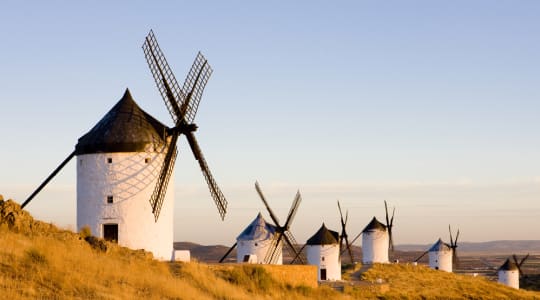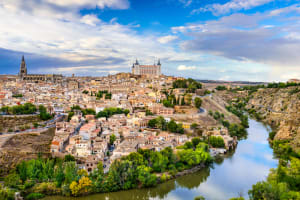
The Consuegra Windmills are a group of windmills located in the town of Consuegra, in the province of Toledo, Spain. The windmills are situated on a hill overlooking the town and the surrounding countryside. There are 12 windmills in total, each with a unique name, such as Sancho, Bolero, and Cardeño.
The windmills were built in the 16th century and were used to grind grain. They were made famous by Miguel de Cervantes in his novel Don Quixote, in which the protagonist, Don Quixote, mistakes them for giants and attacks them. The windmills have since become a symbol of Spanish culture and are a popular tourist attraction.
Today, visitors can climb up to the top of some of the windmills and explore the inside. Some of the windmills have been restored and are still in working order, while others have been converted into museums or souvenir shops. The windmills are also the site of a yearly festival, the Fiesta de la Rosa del Azafrán, which celebrates the local saffron harvest.
In addition to the windmills, the town of Consuegra is also home to a castle, a church, and a bullfighting arena. The castle, known as the Castle of Consuegra or the Castle of San Juan, was built in the 10th century and was used as a fortress during the Middle Ages. The church, the Iglesia de Santa Maria la Mayor, dates back to the 16th century and features a mixture of Gothic and Renaissance architectural styles.
Explore Near Consuegra Windmills
Discover 2 attractions and 3 cities within 75km. Perfect for planning day trips, finding connecting flights, or discovering new destinations to explore during your visit.
Nearby Attractions & Places to Visit
2 destinations within 57.5km - 65.2km from your location


Nearby Cities Worth Exploring
3 destinations within 57.6km - 64.5km from your location
Cross-Border Adventures Near Consuegra Windmills
Discover cross-border adventures near Consuegra Windmills. Explore neighboring countries with similar attractions and extend your travel experience across borders.




